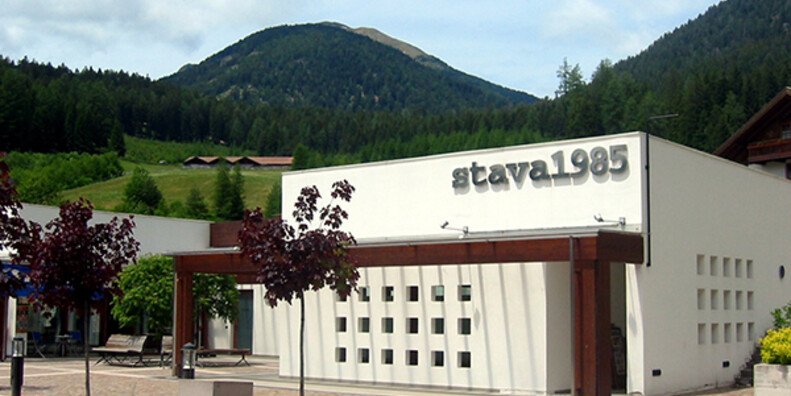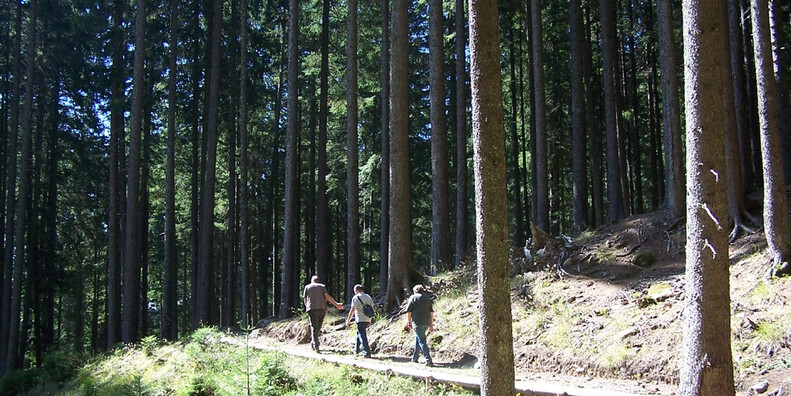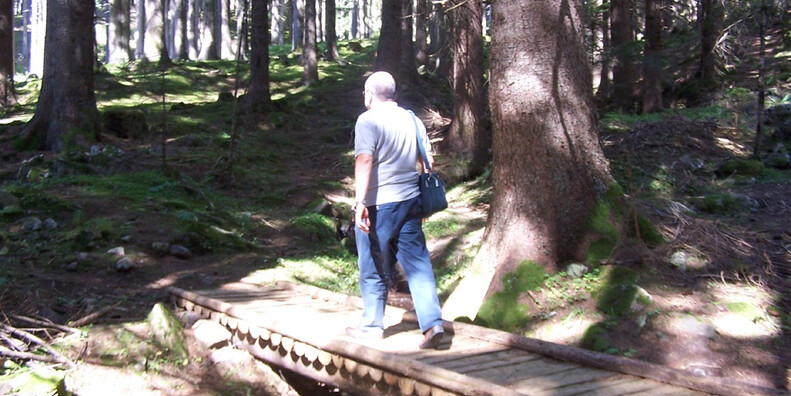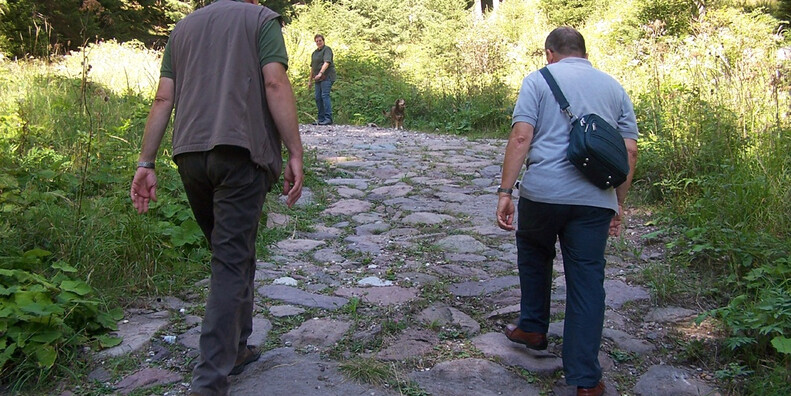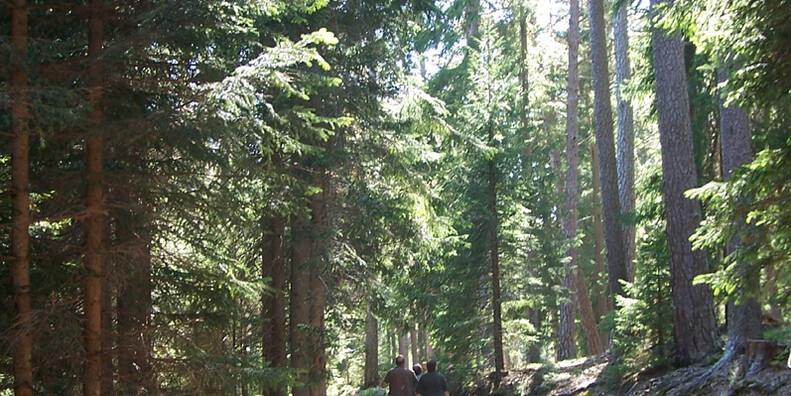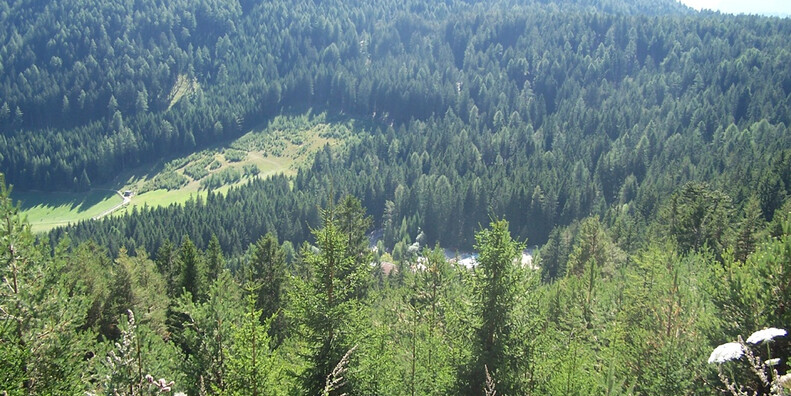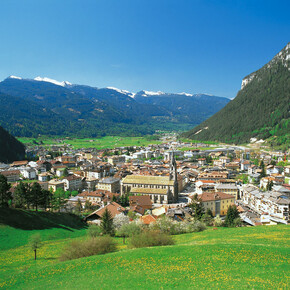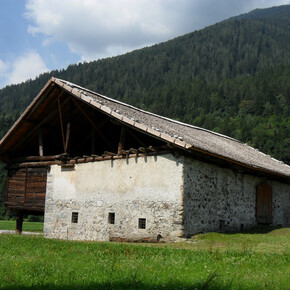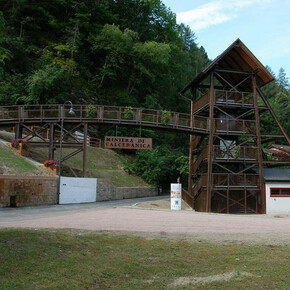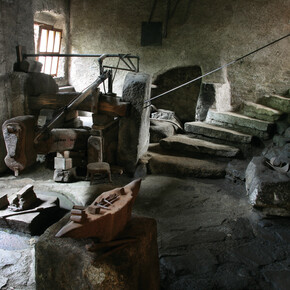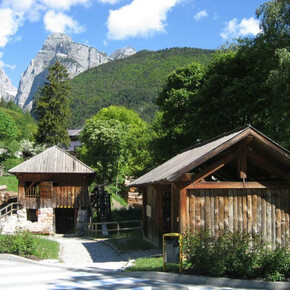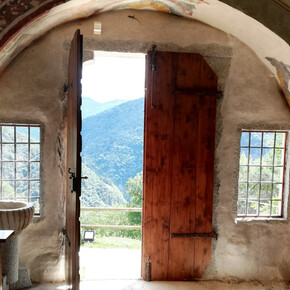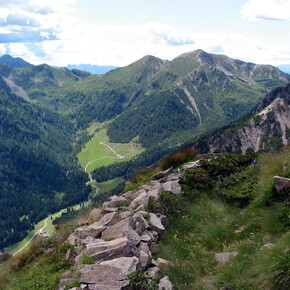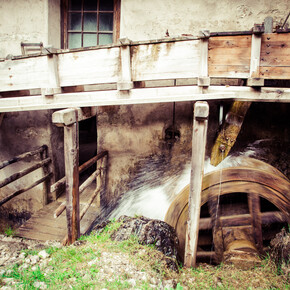Il Sentiero della Memoria – The Memory Route
Starting from Stava, from the Foundation and Information Centre, the Memory Route leads first along the path called the “Discovery Mountain”: here is where the mining activity took place and is where the tailing ponds of the residual mud of the manufacturing collapsed on 19th July 1985.
Then, the Memory Route continues with a visit to the little church La Palanca, where it is possible to stop and contemplate a monument, gift of the “Popolazioni del Vajont”, and a crystal commemorative plaque which was blessed by Pope Giovanni Paolo II when he visited Stava on 17th July 1988.
The Memory Route concludes with a visit to the Church of St. Leonard in Tesero. Next to the church there is the Cemetery of the Victims with a monument which commemorates the victims of Val di Stava.
The path the “Discovery Mountain” lasts two/three hours: it is an easy walk and it is possible to start both from Stava or from the car park near the bridge which crosses Rio Stava, along the street that leads to Pampeago. Thanks to the naturalistic component of this experience you will also learn about the wildlife of Stava and Val di Fiemme.
Along the path, visitors reach also a panoramic spot where it is possible to see the mud flow with the eyes of those who saw it on 19th July 1985. The most interesting points of the Remembrance footpath are accessible also from Passo Pramadiccio after a 30-minute long walk.
The path is always accessible, also in winter when snow conditions permit it.
Discover the Memory Route trough our guided toirs

